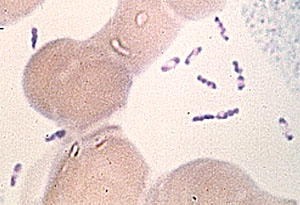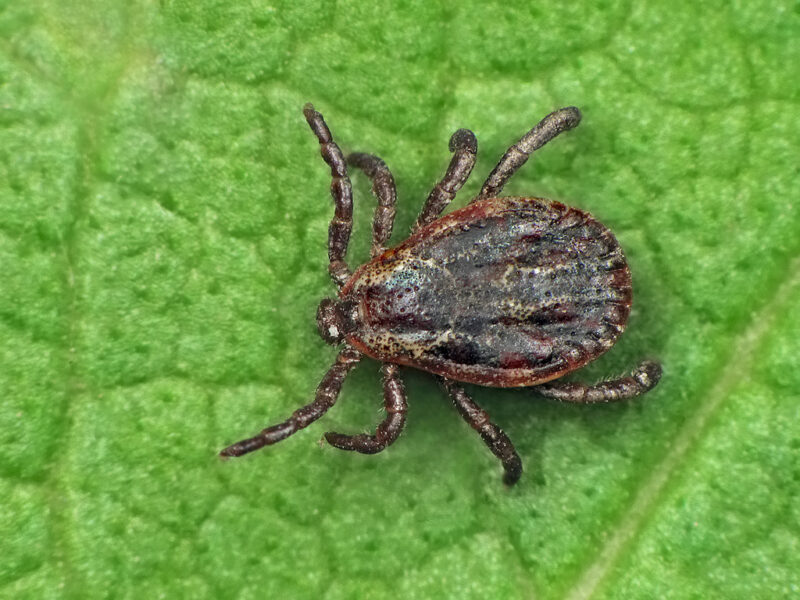Image courtesy of NIAID; CC-BY-SA.
On April 23rd, the Democratic Republic of Congo (DRC) declared a new outbreak of Ebola, marking the country’s 14th outbreak since 1976 (1). The current outbreak is occurring in the Equateur Province of northwestern DRC, which is the same province where the Ebola virus was originally discovered in 1976 (2). Since its discovery, Ebola virus has caused many devastating outbreaks across the African continent, most of which have happened in the DRC (2).

What follows is a brief overview of each of the DRC’s 14 Ebola outbreaks to date:
- 1976: The first recorded outbreak of Ebola Virus Disease in the world occurred in the small village of Yambuku, located in what was then the Equateur Province of northern DRC (formerly Zaire). This outbreak occurred simultaneously with an outbreak in Sudan. Initial cases in the DRC were misdiagnosed as malaria until the new virus was identified. The new virus was named after the Ebola River in the DRC, where most of the cases in this initial outbreak occurred. It led to 318 reported cases and 280 deaths, resulting in an 88% case fatality rate. (2)
- 1977: The second outbreak in the DRC occurred in the village of Tandala and involved only 1 case in a young girl, which was fatal (100% case fatality). The patient had no connection to the 1976 outbreak, which had ended six months previously, nor had she travelled outside of her village, and no one in her village exhibited symptoms before or after her illness and death. Although this outbreak involved only one known case, it was an important one in that it led researchers to the conclusion that the Ebola virus was enzootic in the area and would likely result in future outbreaks. (2,3)
- 1995: The third DRC Ebola outbreak occurred in Kikwit, a city located in the Bandundu Province. The index case was a charcoal worker who died in Kikwit General Hospital in January. The virus soon spread throughout his contacts as well as nosocomially among the hospital employees who had direct contact with the patient. Surveillance for this outbreak was particularly challenging, as no public health surveillance system was in place in Kikwit at the time. (4) This outbreak lasted until May and resulted in 315 cases and 254 deaths (a case fatality rate of 81%). (2)
- 2007: The fourth DRC Ebola outbreak occurred primarily in the Mweka health zone of the Kasai Occidental Province. International response to this outbreak was considerably delayed due to the remote location. Field laboratories were eventually set up and radio broadcasts were used to efficiently communicate news of the outbreak, including methods of individual protection, to local communities. Later research revealed that this outbreak was likely related to a large influx of fruit bats to the area, which are known to be reservoirs of the Ebola virus. In total there were 264 cases and 187 deaths during this outbreak, a 71% case fatality rate. (2,5)
- 2008-2009: The fifth Ebola outbreak also occurred in the Kasai Occidental Province, in the Luebo health zone, which is very close to where the fourth DRC Ebola outbreak occurred only a year previously. During this fifth outbreak, international response in the form of laboratory and training support was particularly helpful for curtailing the spread, but no formal epidemiological investigation was initiated to identify the source. In total, there were 32 cases and 15 deaths (47% case fatality). However, since there was no epidemiological investigation, the case count is likely underestimated. (2,5)
- 2012: The sixth outbreak occurred in the Isiro health zone of the Orientale Province in the northeast part of the country. The CDC and the Public Health Agency of Canada provided laboratory support during this outbreak. There were 38 laboratory confirmed cases and 13 laboratory confirmed deaths, resulting in a 34% case fatality. It is likely that this outbreak involved more cases that were not confirmed in the laboratory and therefore not recorded in the official case count. (2)
- 2014: The DRC’s seventh Ebola outbreak occurred primarily in the Equateur Province near Boende town. Genetic analyses showed that the Ebola virus variant that caused this outbreak was closely related to the one that caused the 1995 outbreak in Kikwit. This finding indicated that the outbreak was not connected to the large West African Ebola outbreak that was happening at the same time in Guinea, Sierra Leone and Liberia. Overall, the 2014 DRC Ebola outbreak caused 69 cases and 49 deaths, a 71% case fatality. (2,6)
- 2017: The eighth outbreak lasted from May-July and occurred in the Likati health zone within the Bas Uélé Province. Multiple international teams assisted DRC health authorities in the outbreak response, which was particularly challenging due to the remoteness of the area and significant lack of resources available. This outbreak resulted in 8 cases and 4 deaths, a 50% case fatality rate. (2,7).
- 2018, May-July: The ninth Ebola outbreak occurred in the Bikoro region of the Equateur Province and caused 54 cases and 33 deaths, which represents a 61% case fatality rate. Notably, as part of the outbreak response, Merck’s Ervebo vaccine was administered for the first time in the DRC to over 3,000 people. No one who received the vaccine contracted the disease. (2,8).
- August 2018-June 2020: The tenth Ebola outbreak in the DRC involved many different health zones within the North Kivu Province of eastern DRC. Cases were also reported in nearby Ituri and South Kivu provinces. This outbreak became the largest Ebola outbreak in the country’s history, as well as the second largest Ebola outbreak in the world. Overall, there were 3,470 cases and 2,287 deaths, a 66% case fatality. Again, the vaccine played a major role in quelling further spread of this major outbreak. Even with the vaccine, this outbreak was particularly challenging to respond to as it took place in an active conflict zone. (2,10)
- 2020, June-November: The eleventh Ebola outbreak began in the city of Mbandaka, a part of the western Equateur province, while the tenth outbreak was still ongoing in the eastern part of the country and is therefore recognized as a unique outbreak. Overall, the eleventh outbreak resulted in 130 cases and 55 deaths, a 42.3% case fatality rate. (2,9)
- 2021, February-May: The twelfth Ebola outbreak in the DRC occurred in the Musienene health zone in the North Kivu Province and caused 12 cases and 6 deaths, a 50% case fatality rate. Sequencing data showed that these cases were related to cases from the large 2018-2020 outbreak in the same province and could have been the result of a persistent infection in a survivor, causing either relapse or sexual transmission of the virus. This outbreak was followed by 90 days of continued surveillance to ensure quick detection of any further cases, which ended in August 2021. (2,11)
- 2021, October-December: Months after surveillance activities concluded following the twelfth Ebola outbreak in the DRC, the 13th Ebola outbreak occurred in the Beni health zone in North Kivu Province. Similarly to the previous outbreak, the 13th outbreak was also linked to the large 2018-2020 outbreak in the same province. The 13th outbreak was declared over on December 16, 2021 with 11 total cases and 6 deaths (55% case fatality). (2,12)
- 2022: The current (14th) outbreak was declared on April 23rd in the city of Mbandaka in the Equateur Province and has so far resulted in three fatal cases. The initial case was vaccinated against the Ebola virus in 2020 and was not known to be a survivor of the disease from any previous outbreak and the other two cases were identified as contacts of the index case. Over 400 contacts of the first three cases have already been identified and a vaccination campaign is currently underway. Sequencing data has shown that this outbreak is not related to any of the previous outbreaks that have occurred in the area and is most likely the result of another animal spillover event. (1)
To summarize, the first Ebola outbreak ever recognized as well as 6 out of 14 outbreaks in the DRC have occurred in the Equateur Province, which is the location of the outbreak that was just declared. The current outbreak also represents the third Ebola outbreak in this province since 2018, which has raised concerns about increasing frequency of the virus in this area (1). An Ebola vaccination campaign began on April 27th in the capital city of the Equateur Province, starting with the contacts of the two initial cases, in addition to the contacts of those contacts. So far, over 350 people have been vaccinated in the city of Mbandaka. A new 20-bed Ebola treatment center has already been established and disease surveillance and investigation of suspected cases has begun. (13)
References:
- https://www.afro.who.int/countries/democratic-republic-of-congo/news/democratic-republic-congo-declares-new-ebola-outbreak-mbandaka
- https://www.cdc.gov/vhf/ebola/history/chronology.html
- https://pubmed-ncbi-nlm-nih-gov.ezproxy.bu.edu/7441008/
- https://academic.oup.com/jid/article/179/Supplement_1/S76/882543?login=false
- https://www.ncbi.nlm.nih.gov/pmc/articles/PMC3218671/
- https://www.cdc.gov/vhf/ebola/outbreaks/drc/2014-august.html
- https://www.cdc.gov/vhf/ebola/outbreaks/drc/2017-may.html
- https://www.cdc.gov/vhf/ebola/outbreaks/drc/2018-may.html
- https://www.cdc.gov/vhf/ebola/outbreaks/drc/2020-june.html
- https://www.who.int/news/item/25-06-2020-10th-ebola-outbreak-in-the-democratic-republic-of-the-congo-declared-over-vigilance-against-flare-ups-and-support-for-survivors-must-continue
- https://www.cdc.gov/vhf/ebola/outbreaks/drc/2021-february.html
- https://www.cdc.gov/vhf/ebola/outbreaks/drc/2021-oct.html
- https://news.un.org/en/story/2022/04/1117032


